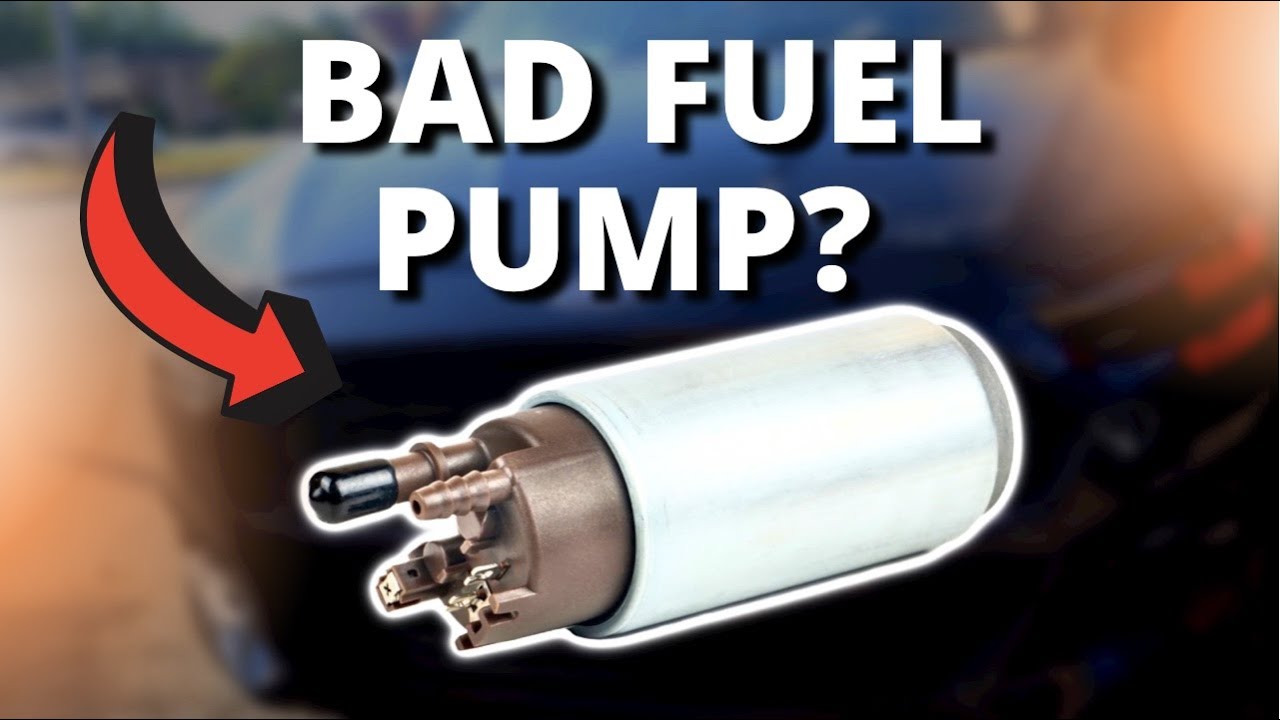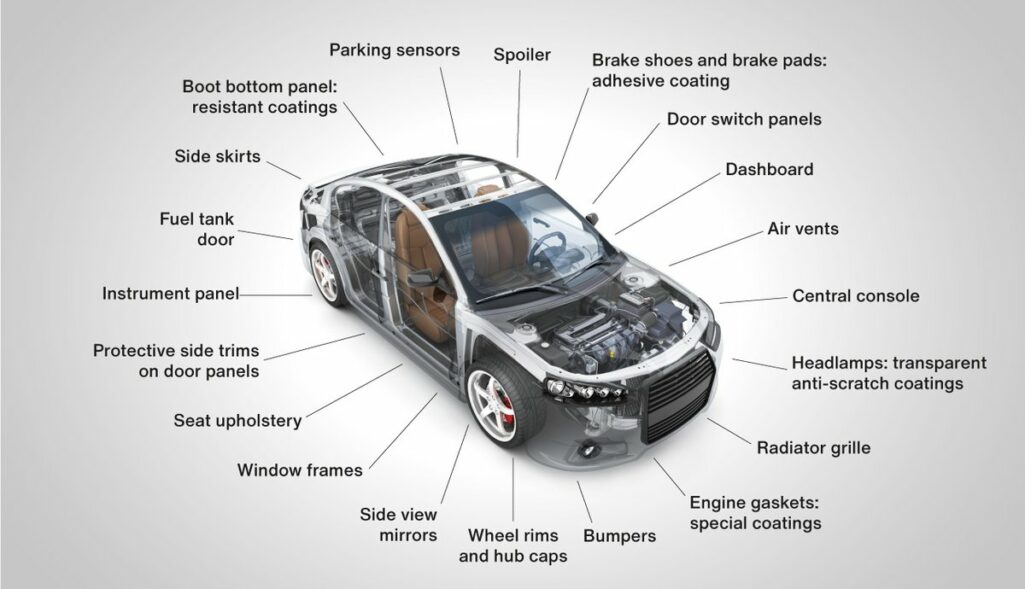
Manual transmissions may appear to be simple mechanical systems. I mean, it’s your responsibility to change gears, right?
But behind the scenes, there are several moving elements working together to keep your car stable while you drive. An example of such a component is the flywheel. When driving a car with a manual transmission, the flywheel plays a key role.
Let’s know what a flywheel is and see how it works, what problems it could cause, and how to fix it.
Where is the FlyWheel Located?
How well your vehicle drives, how much power it has, and how much torque it can generate are all determined by its powertrain. The engine and the drivetrain together make up the powertrain.
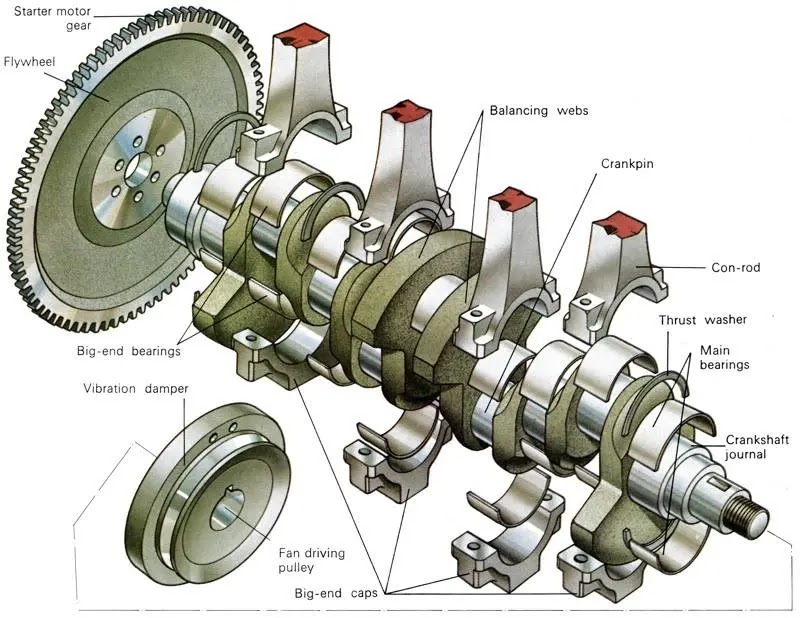
The drivetrain includes the transmission, axles, transfer case, driveshaft, wheels, and differentials (both front and back). These parts generate the torque and horsepower required to propel your car.
The flywheel is one of the essential parts of the powertrain. The failure of the flywheel can have far-reaching consequences on the rest of the powertrain.
What is the FlyWheel?

The flywheel is the heavy metal disc used in manual transmissions. Cast iron, steel, or even aluminum may be used in its construction. This ensures that it is highly stiff and rigid in order to avoid bending or warpage during its usage.
There is a row of gear teeth around the outside edge of the flywheel, and here is where the starting motor of the engine hooks up. Inside the bell housing, the flywheel is attached to a flange on the transmission side of the crankshaft by bolts.
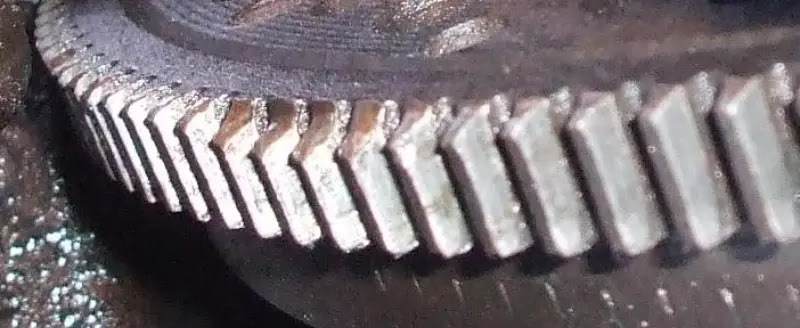
Your vehicle’s clutch assembly is located behind the flywheel. This is why many mechanics argue about whether or not the flywheel belongs to the clutch system. In this context, it’s important to remember that a flywheel may be added to an engine to boost its power output and torque.
Does Automatic Transmission have FlyWheel?
You might have noticed me saying multiple times that the flywheel is an essential part of “manual” transmission. So does this mean that automatic transmission lacks a flywheel? And what does it have in place?
Yes, the flywheel is not present in automatic transmission vehicles; rather, they have what is known as flexplates. Thus, if your car is automatic, you may relax while reading the symptoms of a bad flywheel.

Although flywheels are often associated with manual gearboxes, there are certain manual transmissions that do not use them.
Now let’s see how does the flywheel work.
How Does a FlyWheel Work?
The flywheel is actually an energy storage device, but in what way does a flywheel store energy? You may think of it as being similar to how a mechanical battery works. Flywheels are used to store energy in the form of kinetic energy, as opposed to the chemical form used by batteries.
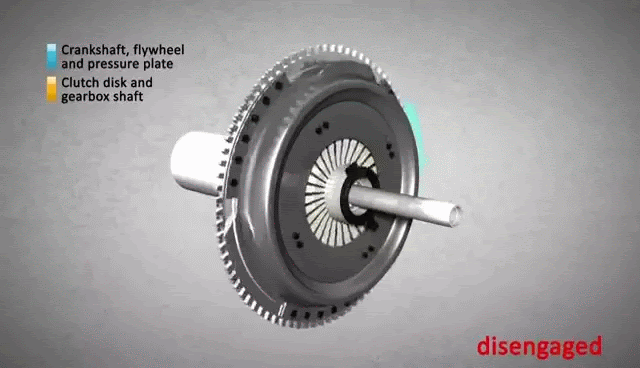
But store energy for what? This leads us to think about the main purpose of the flywheel. But first, let’s find the problem of the combustion engine that it has without the presence of a flywheel.
Internal Combustion Engine Problem
Most of the engines used in the cars are four-stroke engines (intake, compression, power, and exhaust). The power stroke is the only one of the four that causes the crankshaft to turn.
The compression stroke is the stroke that comes before the power stroke. And in contrast to the relatively easy-going nature of the crankshaft during the exhaust and intake strokes, the compression stroke is very stressful to the engine.
Without a flywheel to even things out, the crankshaft would drift during the exhaust and intake strokes, slow down during the compression stroke, then speed up dramatically during the power stroke. This would lead to an unstable power supply and some serious vibrations.
One way to visualize this is to imagine spinning a rotating shaft with a handle; at some places throughout the rotation, you’d be able to exert greater force than at others. However, if a heavy flywheel were attached to the end of the shaft, its rotational momentum may help you rotate the shaft at a more constant speed. The momentum of the shaft will keep it moving even if you let go of the handle.

FlyWheel with crankshaft and pistons
The FlyWheel Purposes
Knowing that the main problem of the engines was vibration and uneven stroke speed, the purpose of the flywheel is clearly understood: it is used to smooth the combustion process. But that’s not everything:
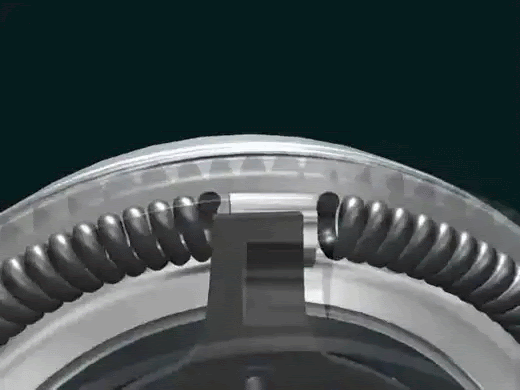
1- The Engine Start:
To help start the engine, gear teeth are machined into the flywheel’s circumference. When the key is turned, a tiny gear, known as a Bendix gear in the engine’s starting motor, meshes with the flywheel.
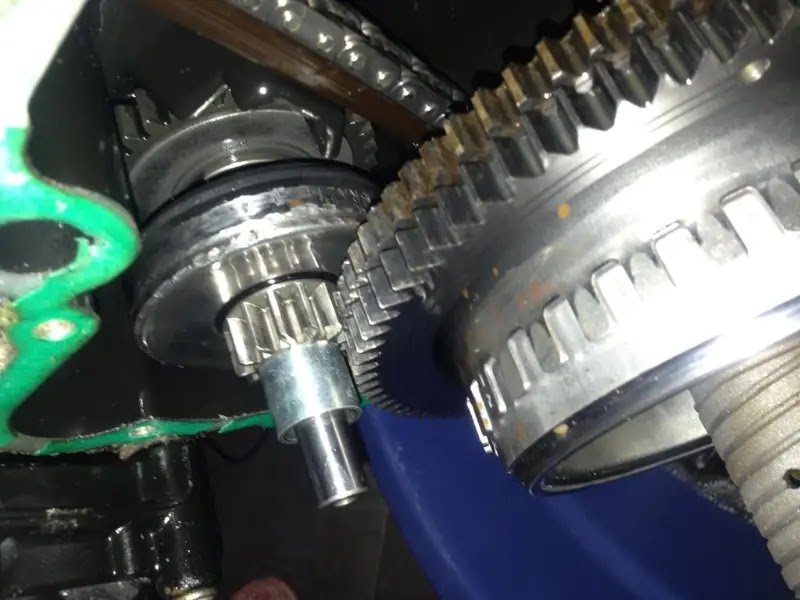
Starting the engine involves a series of mechanical processes, the first of which is the compression cycle, which is initiated by the Bendix gear/starter motor combination that spins the flywheel. Once the engine is running, the Bendix gear will retract, allowing the flywheel to spin freely.
2- Speed Smoothing:
When the engine is running, the piston’s up-and-down motion is transformed into rotation by the crankshaft. However, this motion is uneven since power is only created twice (a 4-cylinder engine) or four times (an 8-cylinder engine) during one engine revolution.
Inertia applied by the flywheel mass between piston firings maintains the crankshaft’s rotation speed, ensuring a smooth and efficient engine operation.
3- Lowering Vibrations:
Every time a piston fires, it does so at an angle relative to the crankshaft, causing the engine to shake and vibrate. This rocking action is reduced by the flywheel’s mass, which also contributes to the engine’s placement on its mounts and reduces the overall vehicle’s vibration.
4- Stress Reduction:
The flywheel reduces the wear and tear on the rest of the drivetrain by regulating the engine’s motion and speed. The driveshaft employs universal joints that continually change angles as the vehicle turns; the engine and transmission shafts are parallel to each other, but the couplings between the axle and the gearbox are not. When using a flywheel, the stress placed on the joints is greatly diminished.
Symptoms of a Bad FlyWheel
Watch out for any of these symptoms in your manual car and try to solve the issue asap for things not to get worse.
Gear goes into Neutral or Slips out:
When shifting gears while driving, the transmission may slip sometimes. This occurs when it is clear that the engine is not sending power to the wheels.
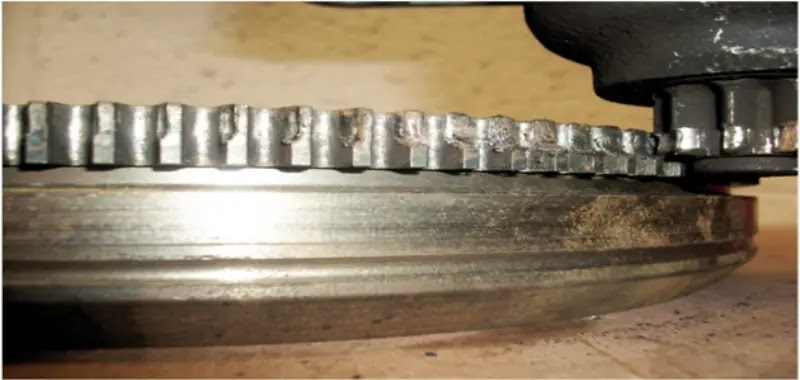
A worn clutch is usually to blame for this issue. The flywheel will also wear down over time due to the sliding clutch. The pressure plate may begin making grinding noises, and the flywheel and other clutch assembly components may eventually distort or shatter due to overheating.
Clutch Pedal Vibrates:
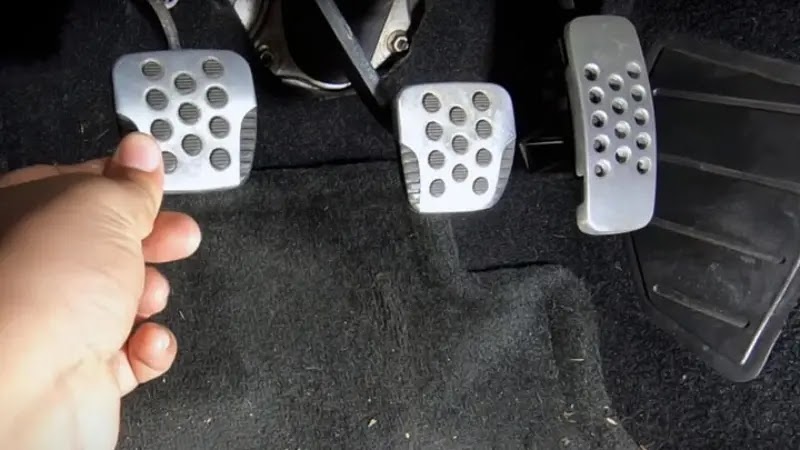
When using the clutch, you could feel vibrations in the pedal or the floor of your car. These vibrations point to a problem with the flywheel’s spring mounts. If you’re familiar with how clutches work, you know that the spring mechanism helps cancel vibrations.
Burning Smell from the Clutch:
This smell is produced when the clutch is being operated incorrectly, whether due to a defective flywheel or a beginner driver. The facings of a clutch are often made of sound-dampening materials.
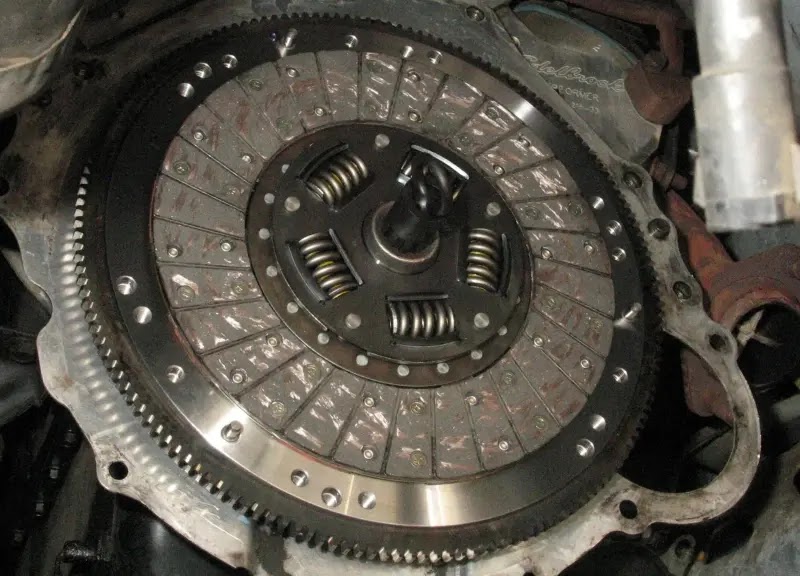
Clutch Facing
When the clutch is used incorrectly, friction between the facings causes the surface to heat up and eventually glaze over. This will result in a strong, pungent, acrid smell.
Clutch Dragging:
That’s the inverse of what happens when the clutch slips out. The clutch will not fully release. Grinding sounds can be heard while shifting into higher gears, and starting the vehicle in first gear may be impossible.
A faulty flywheel does not cause drag in the clutch. It is the flywheel or crankshaft assembly bearing or bushing.
Regularly Vibrating:
The clutch doesn’t engage smoothly. But instead, it “skips” along the flywheel. The clutch grips and releases repeatedly, giving the impression of a stutter or vibration.
It is most common when beginning from a full stop, although it can occur in any gear. It’s not always the flywheel to blame for clutch chatter; a worn or cracked pressure plate, clutch disc, release bearing, or oil contamination from a leaking engine or gearbox are all common suspects.
Conclusion
The flywheel is a very important part of your car’s powertrain, providing you with a smooth and balanced driving experience. Without it, you will have a hard time shifting gears or even starting the car.
Always watch out for the symptoms we listed in this article to tackle any problem that occurs with your flywheel before it gets even worse.


